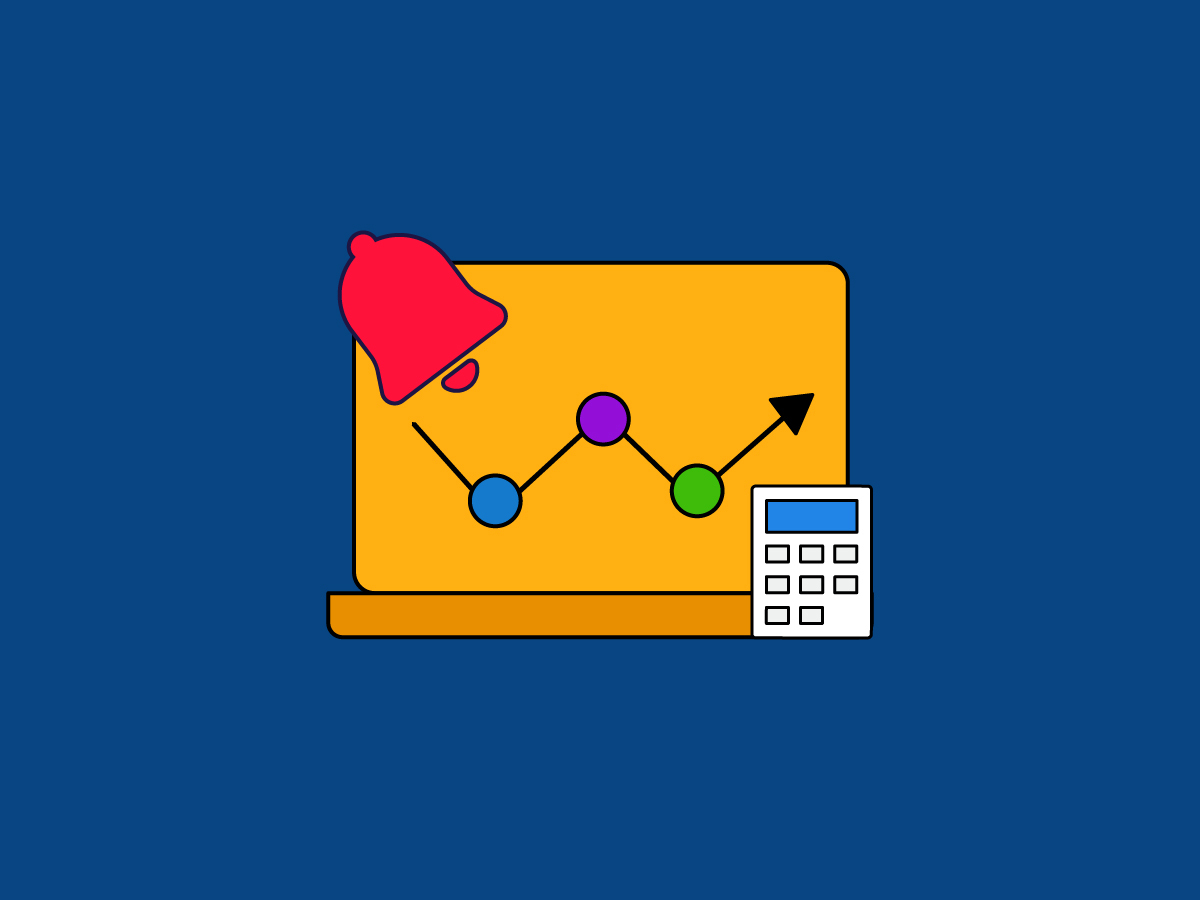The rapid growth of data and the increasing complexity of businesses call for the adoption of automated alerts. Early warning systems have evolved into transformative tools that enable better decision-making.
Automated alerts use advanced algorithms and continuous data monitoring to empower finance teams to detect anomalies, track key performance indicators, and respond promptly to critical events.
In fact, a report by Aberdeen Group states that companies using real-time automated alerts achieve a 10% increase in annual revenue compared to those without such systems.
Join us as we explore the importance of automated alerts and how to implement an early warning system. In this guide, you’ll find:
- What are automated alerts in finance?
- How do finance teams benefit from automated alerts?
- 5 Applications of automated alerts in finance
- Building a perfect automated alert strategy for finance teams
- Automate financial alerts with Bluecopa
Let’s dissect.
What are automated alerts in finance?
Automated alerts and early warning systems offer timely insights and prompt proactive decision-making. With these alerts, you can set up predefined rules, conditions, or thresholds to monitor key performance indicators continuously.
Say, when the data you monitor deviates from expected values, these automated alerts get instantiated. Users get just-in-time notifications and can stay informed of critical events.
How do finance teams benefit from automated alerts?
The advantages of automated alerts are manifold. They offer proactive issue detection, rapid response, timely resolution, and enhanced collaboration and accountability. Let’s get into the details.
Automated alerts can elevate finance teams in several ways, including:
Increasing efficiency
Automated alerts free up finance team members' time by automating repetitive tasks like sending out invoices or tracking payments. This can allow them to focus on more strategic and value-added activities.
Improving accuracy
Automated alerts can improve the accuracy of financial data by reducing the risk of human error. This is because automated alerts are based on pre-defined rules and criteria, which can help to ensure that data is entered and processed correctly.
Reducing risk
Automated alerts can reduce the risk of fraud and other financial irregularities by flagging suspicious activity. This can help finance teams take proactive steps to mitigate these risks.
Enhancing decision-making
Automated alerts can help finance teams make better decisions by providing them with real-time insights into the business's financial health. This information can be used to identify trends, track performance, and make informed decisions.
5 Applications of automated alerts in finance
Now that you know the benefits of automated alerts, it's time to learn about the real-world applications. Here are a few examples:
- Anomaly detection: Automated alerts can help identify anomalies in your data quickly and notify relevant stakeholders. For instance, if there is a sudden and significant increase or decrease in sales revenue, an automated alert can be triggered, allowing you to investigate the issue promptly.
- Performance monitoring: With automated alerts, you can monitor key performance indicators (KPIs) and be notified when they deviate from the expected range.
- Data quality issues: Automated alerts can be set up to flag data quality issues as they occur. For instance, if there is missing or inconsistent data in a specific dataset, an alert can be generated, prompting data stewards to investigate and resolve the issue momentously. This helps maintain data accuracy and integrity.
- Threshold breach: Setting thresholds for various metrics allows you to monitor critical thresholds and be notified when they are breached.
- Compliance monitoring: Automated alerts play a crucial role in monitoring regulatory compliance. For instance, automated alerts can be triggered if there are violations of data privacy regulations or unusual patterns in financial transactions.
Building a perfect automated alert strategy for finance teams
An automated alert strategy is a set of rules and procedures that define how and when alerts are generated, delivered, and acted upon. A well-designed automated alert strategy can help finance teams identify and respond to potential problems early, improve efficiency, and reduce errors.
Here are some key steps to developing a clean-slate automated alert strategy:
#1 Identify the key metrics that need to be monitored. The first step is to identify the key metrics that need to be monitored. These metrics will vary depending on the business's specific needs, but some common examples include revenue, expenses, cash flow, and debt levels.
#2 Set alert thresholds. Once the key metrics have been identified, the next step is to set alert thresholds. These thresholds define when an alert should be generated. For example, an alert might be generated if revenue falls below a certain level or if expenses exceed a certain budget.
#3 Choose the right alert delivery method. There are various ways to deliver alerts, including email, text messages, and phone calls. The best delivery method will depend on the specific needs of the business.
#4 Define the appropriate actions to take when an alert is triggered. When an alert is triggered, planning what action should be taken is important. This might involve investigating the issue, taking corrective action, or notifying other stakeholders.
#5 Test and monitor the alert strategy. Once the alert strategy has been implemented, testing and monitoring its performance is important. This will help to identify any areas where the strategy can be improved.
Automate financial alerts with Bluecopa
Consider the following example. WonderMart is an e-commerce company that sells a wide variety of products, including home appliances, clothes, and pet food. Jonathan, the company's FinOps manager, has set up a series of alerts to track the weekly order of mobile phones.
If the order deviates by 10% from the plan, Michael Scott, the Mobile Business Head, will be notified. If the order falls below 20%, Tan Angeleu, the Electronics Business Head, will be notified. And if the order falls below 30%, Liz Morgan, the CRO, will be notified. This way, FinOps platforms like Bluecopa can alert users whenever a breach occurs.
Setting up an early warning system with Bluecopa gives you the tools and capabilities to manage risks and achieve better outcomes proactively. You can seamlessly identify potential risks and opportunities by defining key indicators, gathering and integrating relevant data, and leveraging advanced analytics.
.png)
Bluecopa is a trusted partner that helps modern finance teams establish robust automated alerts to safeguard their success. The platform lets you closely track financial KPIs and set custom alerts for each. You can trigger alerts to teams or individual members whenever there is a fluctuation in set thresholds.
Once you get one of the alerts, you can be taken into the detailed view, where you can drill down and see more of the high-level number. You could understand what’s causing the spike, dip, or anomaly.
With automated alerts, Bluecopa helps you:
- Act on deviations instantly and accelerate proactive business partnering. By receiving instant alerts, you can quickly identify and address any issues before they become major problems.
- Improve accuracy as it does the heavy lifting of collating and cleansing data. Bluecopa's automated alerts are based on accurate data, so you can be confident that you are making informed decisions.
- Set multi-level and multi-threshold alerts. This means that you can create different alerts for different types of deviations and send alerts to different stakeholders depending on the severity of the deviation.
Automated alerts in finance help you take proactive measures and solve problems as they arise. You don't need to wait until the end of the month to recognize what has changed. Taking action sooner will have its own set of benefits which you would have otherwise missed.
Bluecopa ensures that all team members are alerted to changes, wiping away the pain of manually communicating with multiple stakeholders. Everyone gets aligned on what's happening to act as a team. It saves valuable time for users and lets them act on it instantaneously.
To know more about setting up automated alerts with Bluecopa, book a demo.




.jpeg)

